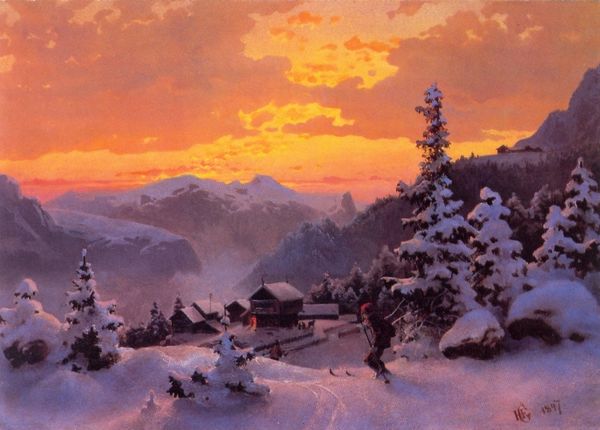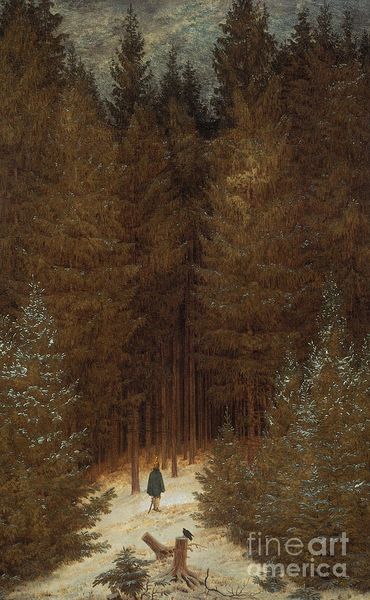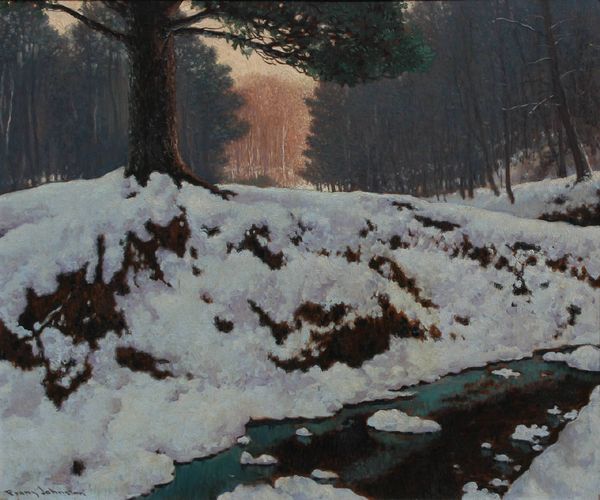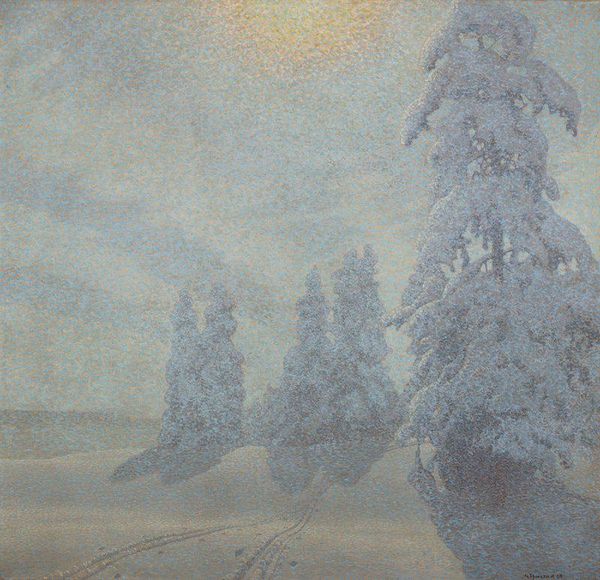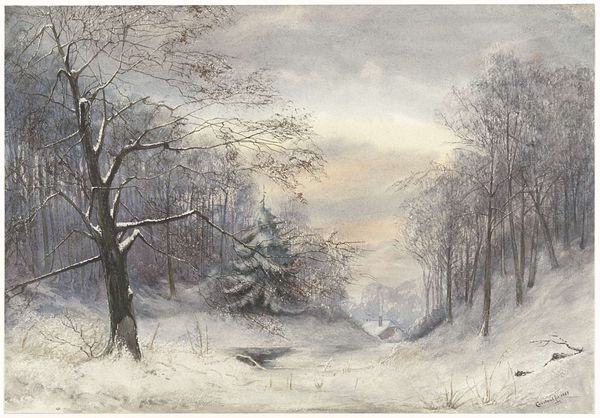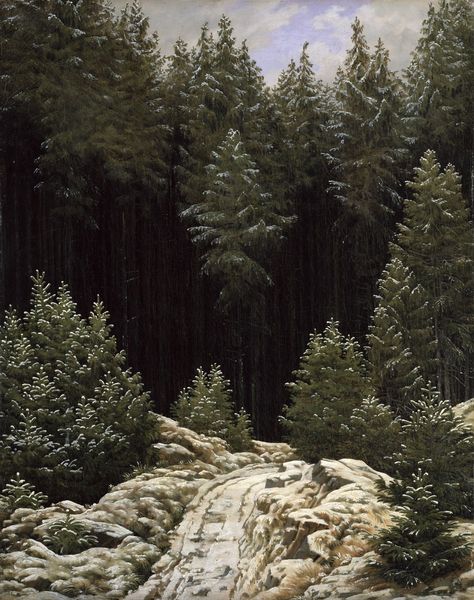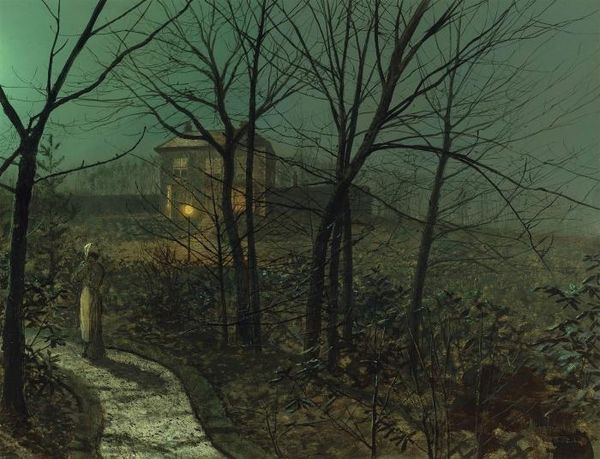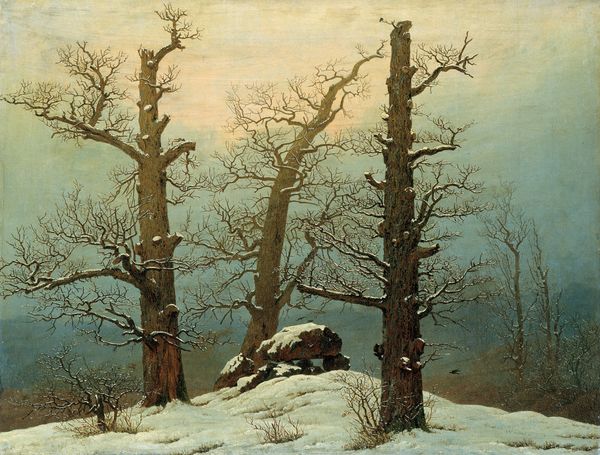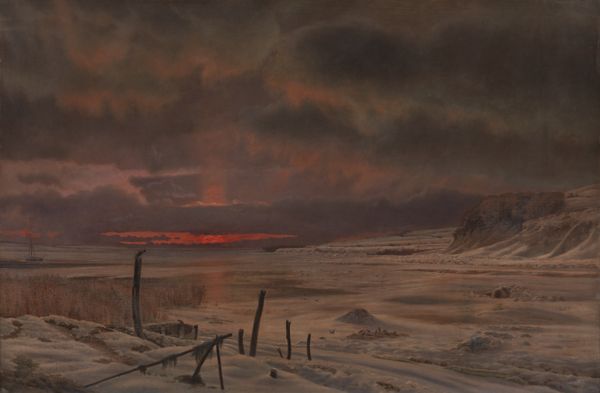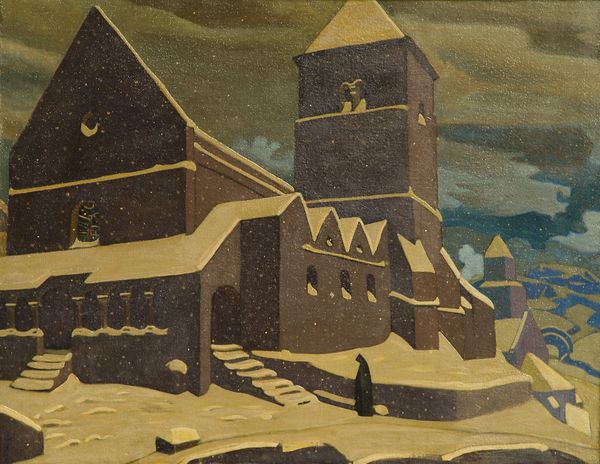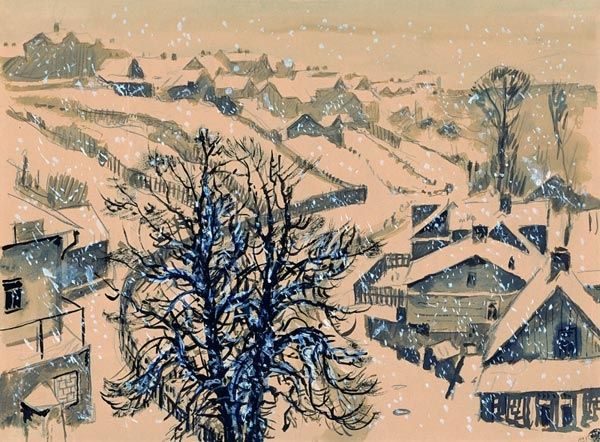
Copyright: Public domain
Curator: There’s a definite chill emanating from this canvas. Caspar David Friedrich completed "Winter Landscape" in 1811 using oil and tempera. It now resides here at the National Gallery in London. What are your initial thoughts? Editor: Isolation. Utter, desolate isolation. The muted tones and bleak scenery really drive that home. It almost feels claustrophobic despite the open space. Curator: The sense of confinement comes, I think, from Friedrich's use of symbolism. The stark, barren trees often represent death or the end of life's cycle, while the distant church spire, barely visible through the fog, hints at a potential for spiritual salvation, albeit a very distant one. Editor: It is fascinating how Friedrich uses the church as almost a mirage – the aspiration, but untouchable and ever so blurry. The figure leaning against the rock— is he praying before a crucifix leaning on the tree, is very small within the immensity. Are they finding solace, or merely resigned? Curator: Precisely. The figure is crucial. Though small, its placement directs our gaze and begs contemplation. Notice, also, how the broken crutches are cast aside. This motif has been interpreted in varying ways - either a literal physical healing of the body, or the renunciation of worldly assistance to obtain a different kind of miracle. The painting can be seen as a commentary on the sociopolitical upheavals of the Napoleonic era and the longing for faith as an escape from despair. Editor: I can see the turmoil reflected. Viewing this with the lens of the period, knowing Friedrich’s background, that near-silhouette church takes on another meaning, not only of solace, but resilience, perhaps. He paints a period defined by immense wars but with a hidden symbolism, an anchor amidst the turmoil of the time. It speaks of the silent, powerful influence of cultural memory. Curator: Indeed, the symbolism allows for complex interpretations, reflecting both personal faith and public hopes amid upheaval. Editor: What an incredible distillation of a historical moment and of the spirit during these periods of crisis; and all with so little use of the palette, such austere technique. Curator: I agree. It remains a potent work of cultural and personal resonance even today.
Comments
No comments
Be the first to comment and join the conversation on the ultimate creative platform.
